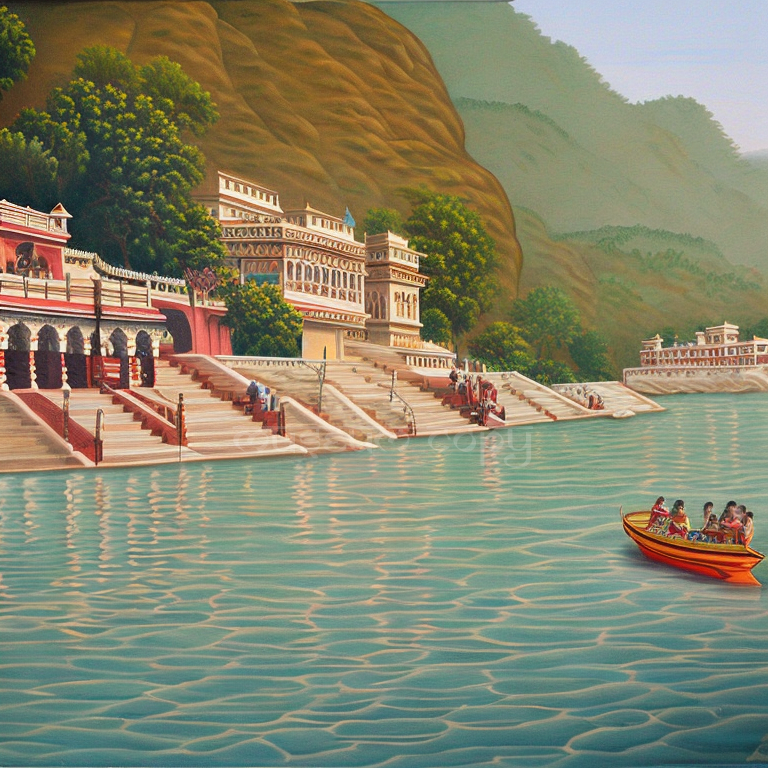Unraveling the Controversy: The Bengal School of Art vs. Raja Ravi Varma
•

Within the rich tapestry of Indian art history, a captivating controversy emerges between the Bengal School of Art and Raja Ravi Varma. This contentious debate revolves around their contrasting approaches to art, their influence on Indian art movements, and the underlying clash of ideologies. In this blog post, we delve into the controversy, shedding light on the differing perspectives and shedding light on the impact it had on the Indian art landscape.
The Traditionalist Standpoint
The Bengal School, led by Abanindranath Tagore and Gaganendranath Tagore, championed the revival of traditional Indian painting techniques and aesthetics. They rejected Western academic art and sought to depict the essence of Indian culture and spirituality through their works. The school emphasized the importance of national identity and cultural revival.
The Bengal School, led by Abanindranath Tagore and Gaganendranath Tagore, championed the revival of traditional Indian painting techniques and aesthetics. They rejected Western academic art and sought to depict the essence of Indian culture and spirituality through their works. The school emphasized the importance of national identity and cultural revival.
Criticisms and Opposition
Critics of the Bengal School argued that their rigid adherence to tradition limited artistic growth and innovation. They believed that the movement's nationalist agenda overshadowed individual artistic expression. Some critics also claimed that the Bengal School lacked the technical mastery and innovation seen in Western art.
Raja Ravi Varma - The Modernist Perspective
Raja Ravi Varma, renowned for his fusion of Indian and Western artistic influences, took a more progressive approach to art. His realistic and naturalistic style, influenced by European academic art, aimed to bridge the gap between tradition and modernity. Varma's paintings were accessible to a wider audience due to mass reproduction techniques, making him a popular figure during the colonial era.
Backlash and Criticisms
Varma faced criticism from traditionalists who accused him of diluting Indian art with Western elements. They argued that his art lacked the spiritual depth and cultural authenticity that the Bengal School emphasized. Traditionalists also contended that Varma's paintings catered more to the tastes of the Indian elite and the colonial rulers, rather than reflecting the true essence of Indian society.
Impact and Legacy - Influence on Indian Art Movements
The controversy between the Bengal School and Raja Ravi Varma sparked a heated debate within the Indian art community. It led to the emergence of various art movements and ideologies that sought to redefine Indian art. The clash of perspectives contributed to the evolution of artistic expression and the exploration of new themes and techniques.
Shaping Modern Indian Art
Despite the controversy, both the Bengal School and Raja Ravi Varma played pivotal roles in shaping modern Indian art. The Bengal School laid the foundation for the nationalist art movement and the revival of traditional Indian painting techniques. Varma's fusion of Indian and Western influences opened new avenues for artistic exploration and paved the way for subsequent artists to experiment with diverse styles.
Conclusion
The controversy between the Bengal School of Art and Raja Ravi Varma remains an intriguing chapter in Indian art history. While the Bengal School focused on preserving tradition and emphasizing national identity, Raja Ravi Varma embraced a more progressive and eclectic approach. The clash of ideologies fueled debates, inspired new art movements, and ultimately enriched the diverse tapestry of Indian art. Despite the controversy, both entities left an indelible mark on Indian art, shaping its trajectory and captivating the imagination of art enthusiasts for generations to come.